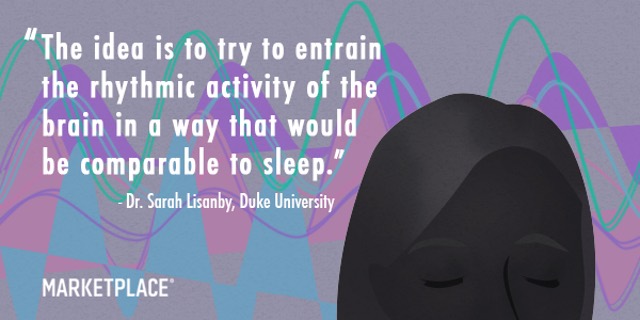If I learned anything from watching the Back to the Future movies, it is that prescience is dangerous. Someone who knows too much about their own future might try to reprogram it in their favour, and every small change has the potential to rewrite history.
In an early scene from Back to the Future Part II, Marty McFly and his girlfriend Jennifer Parker – played by Elisabeth Shue – travel from 1985 to 2015. The DeLorean is airborne and Doctor Emmett “Doc” Brown is wearing a funky visor. But forget flying cars and fashion – Jennifer wants to know what happens to her in the future: “I’m gonna be able to see my wedding dress! I wonder where we live. I bet it’s a big a house with lots of kids!”
Worried about where her curiosity might lead her, Doc pulls out his sleep-inducing alpha rhythm generator – it looks like a pair of high-tech opera glasses – and knocks her out with a flash. Doc and Marty then hide Jennifer’s unconscious body in an alley to protect her from the shock of crossing paths with her future self.
Doc Brown is a time travel expert and practiced meddler, so it is not surprising that he carries around a sleep-inducing alpha rhythm generator in case he needs one to cover his tracks. But does a sleep-inducing device exist in the real 2015? It does not – at least not in the way Back to the Future imagines.
That flash of light is the first clue that the technology is too good to be true. Researchers at Pennsylvania State University found that nighttime exposure to light – especially the kind emitted by electronic devices – makes it harder to fall asleep.
Aiming a little lower than instant-sleep-inducing technology, we find ourselves among a range of devices that won’t make you fall asleep, but might make you sleep better.

The US military is very interested in efficient sleeping. In 2003, the Defence Advanced Research Projects Agency (DARPA) put $US20 million toward its “Continuous Assisted Performance program,” research that looked for ways to keep soldiers awake for up to seven days “without suffering any deleterious mental or physical effects and without using any of the current generation of stimulants,” according to DARPA’s then-director Tony Tether.
In conjunction with DARPA, a company called Advanced Brain Monitoring is developing a sleep mask called the Somneo Sleep Trainer. It blocks light and noise, and heating elements around the eyes may help people reach a deeper stage of sleep faster.
Another technique to encourage better sleep is called transcranial magnetic stimulation, or TMS. TMS uses magnetic fields to create small electrical currents in parts of the brain, and researchers are trying to tune those currents to nudge a sleeping brain toward restorative, REM sleep.
Sarah Lisanby is Chair of the Department of Psychiatry and Behavioural Sciences at Duke University. “Sleep is a rhythm,” she says. “And you can actually use the different forms of stimulation – such as magnetic stimulation, or direct electrical stimulation, or sensory stimulation – at different frequencies to modulate those brain rhythms. The idea is to try to entrain the rhythmic activity of the brain in a way that would be comparable to sleep.”
Which brings us back to Doc’s device. Alpha waves are a type of brain wave that occur during REM sleep. If an alpha rhythm generator did exist, maybe it would stimulate the brain rhythms associated with restorative sleep. But there is another flaw in its design.
Brain-stimulating technologies like TMS are better at suggesting behaviours than forcing them. So, short of a blow to the head or some other kind of trauma, there isn’t a reliable, non-invasive way to knock someone out. To put someone to sleep, they have to want it.
This post originally appeared at Marketplace Tech.
